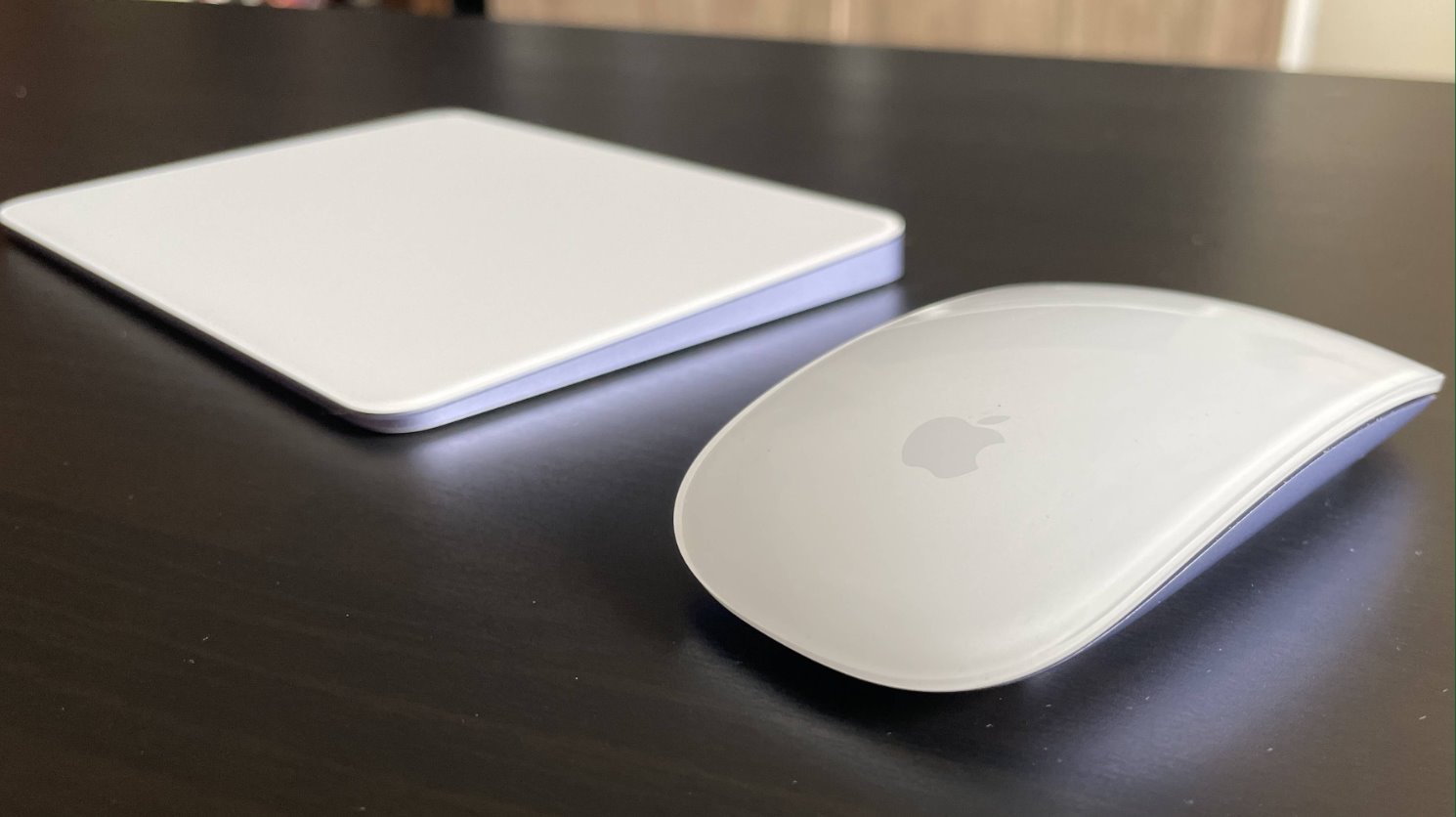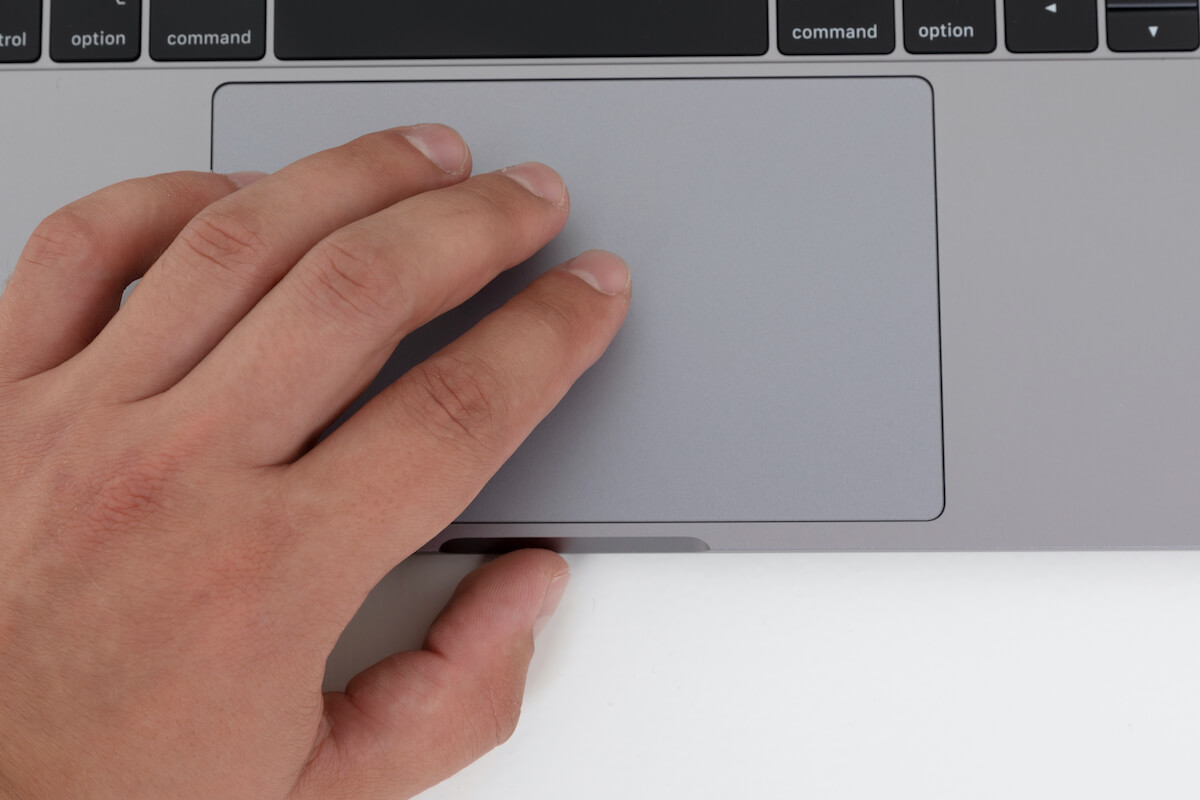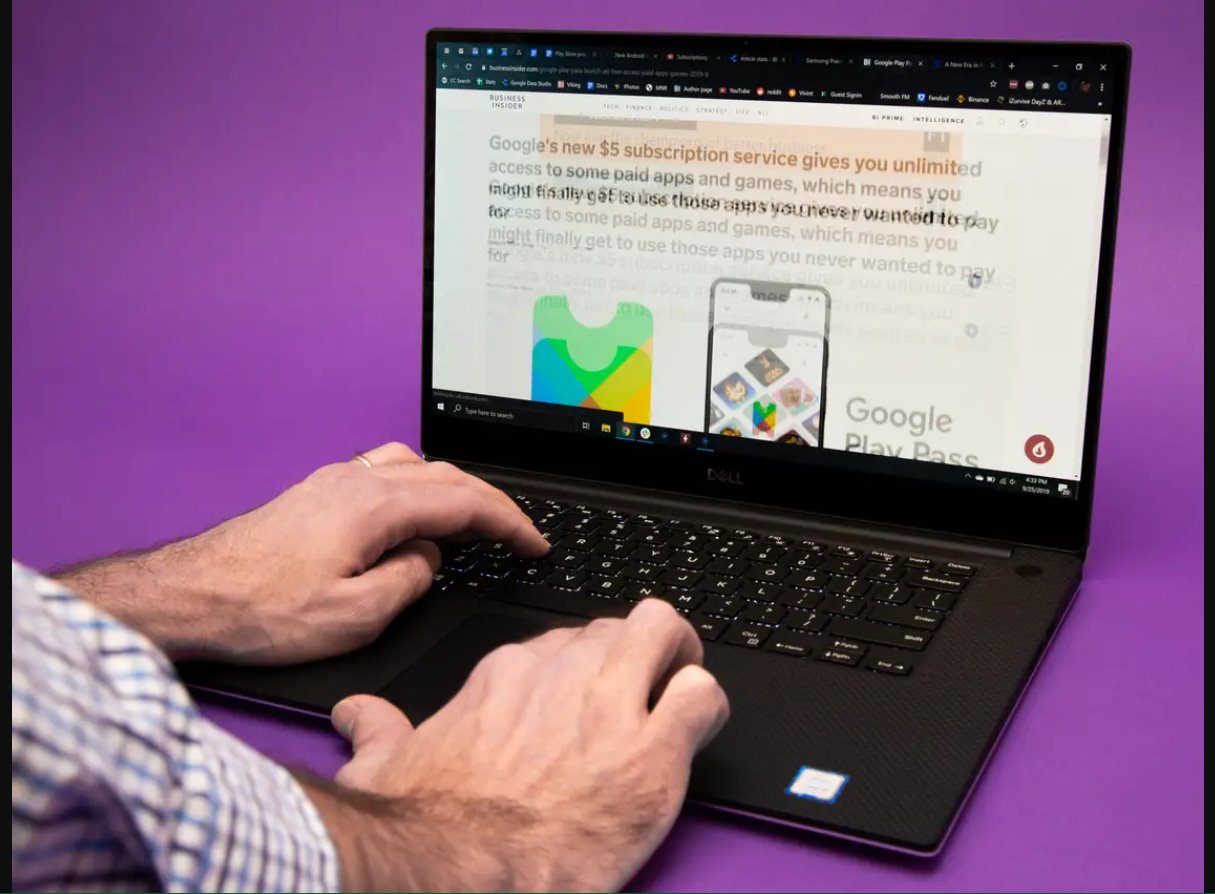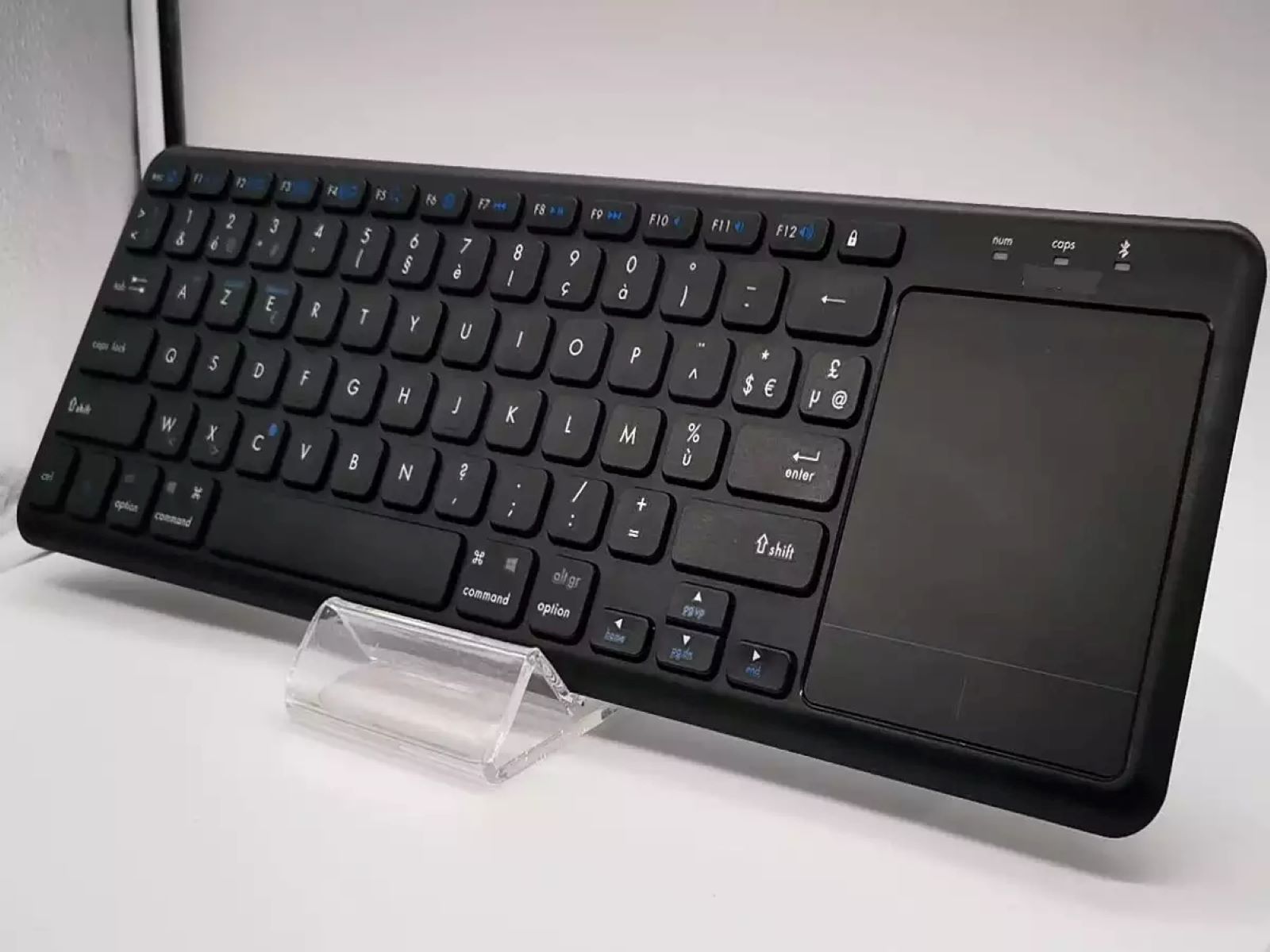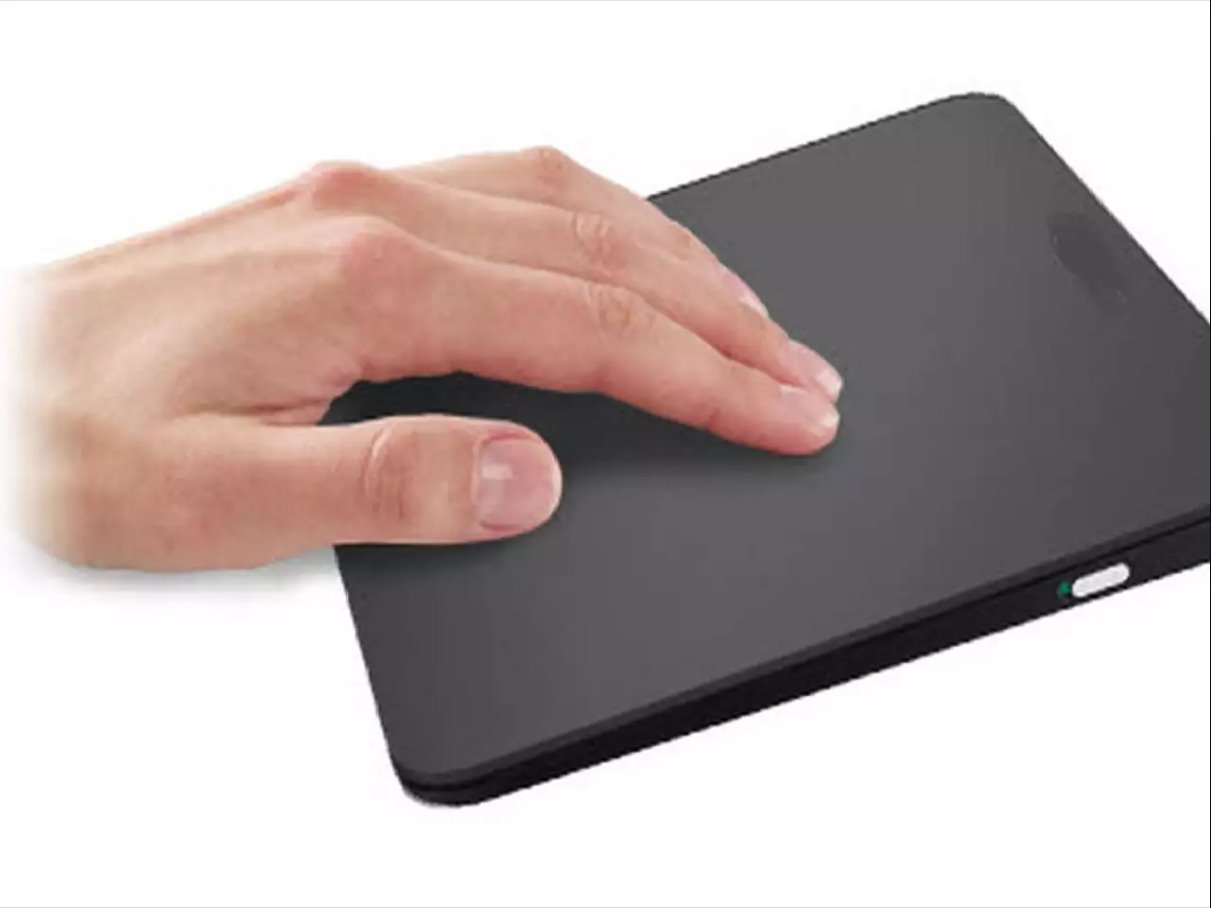Introduction
When it comes to using a laptop or computer, many users prefer the precision and ease of working with a mouse rather than relying on the trackpad. However, what can be frustrating is when the trackpad continues to function even when a mouse is connected. Accidental touches or swipes on the trackpad can lead to unintended actions or cursor movements, resulting in a less efficient and even frustrating user experience.
In Windows 11, Microsoft has introduced a convenient feature that allows users to automatically disable the trackpad when a mouse is connected. This feature ensures that the trackpad remains inactive while you work with your mouse, providing a seamless and uninterrupted computing experience.
In this article, we will explore why disabling the trackpad when a mouse is connected can be beneficial and how to enable this feature in Windows 11. Whether you are a student, professional, or casual user, you can benefit from this setting and enjoy a smoother and more accurate computing experience.
Why Disable Trackpad When Mouse Is Connected?
Disabling the trackpad when a mouse is connected offers several advantages and can greatly improve your productivity and user experience. Here are some key reasons why you might want to consider enabling this feature:
- Prevention of Accidental Touches: When using a mouse, accidental touches on the trackpad can lead to unintended cursor movements or actions. By disabling the trackpad, you eliminate the risk of accidentally brushing against it and disrupting your workflow.
- Enhanced Precision and Control: Working with a mouse often provides a higher level of precision and control compared to using the trackpad. With the trackpad disabled, you can fully leverage the capabilities of your mouse, allowing for smoother navigation, more accurate inputs, and improved productivity.
- Elimination of Cursor Jumping: It’s not uncommon for the cursor to jump or move unexpectedly when the trackpad is active while using a mouse. This can be frustrating and disrupt your workflow. Disabling the trackpad ensures that the cursor remains stable and doesn’t jump around, providing a more seamless and predictable experience.
- Reduced Hand and Wrist Strain: Using a trackpad for extended periods can cause fatigue and strain on your hand and wrist. By using a mouse instead and disabling the trackpad, you can achieve a more ergonomic setup, reducing the risk of repetitive strain injuries and promoting better comfort during long work sessions.
- Personalized Workflow: For individuals who prefer a specific input method, such as using only a mouse or primarily relying on the trackpad, enabling the option to disable the trackpad when a mouse is connected allows for a more customized and efficient workflow. You can seamlessly switch between input devices without any interruptions or conflicts.
By taking advantage of the option to disable the trackpad when a mouse is connected, you can optimize your computing experience, minimize distractions, and maximize your productivity. With a smoother and more controlled interaction, you can focus on your work or leisure activities without the frustration of accidental trackpad touches or cursor movements.
How to Disable Trackpad When Mouse Is Connected in Windows 11
Windows 11 provides multiple methods to disable the trackpad automatically when a mouse is connected. Here are three commonly used methods:
Method 1: Using Windows Settings
- Click on the Start menu and select Settings (or press Windows key + I).
- In the Settings window, click on Bluetooth & devices in the left sidebar.
- Click on Mouse, touchpad, & pen under the “Related Settings” section on the right pane.
- Toggle on the switch for Automatically disable touchpad when a mouse is connected.
This method allows you to easily enable the option to disable the trackpad when a mouse is connected directly from the Windows 11 Settings app.
Method 2: Using Device Manager
- Right-click on the Start button and select Device Manager from the context menu.
- In the Device Manager window, locate and expand the Mice and other pointing devices category.
- Right-click on your trackpad device (such as Synaptics or ELAN) and select Disable device from the context menu.
Disabling the trackpad through Device Manager ensures that it remains inactive whenever a mouse is connected. However, if you want to re-enable it, follow the same steps and select Enable device instead.
Method 3: Using Third-Party Software
If the previous methods don’t work for your specific device or preferences, you can also explore third-party software solutions. There are various applications available that allow you to customize your trackpad and mouse settings, including the option to disable the trackpad when a mouse is connected. Some popular options include Touchpad Blocker and AutoSensitivity.
After installing and launching the preferred software, look for the relevant option to disable the trackpad when a mouse is connected, and toggle it on. Remember to adjust any additional settings according to your needs before applying the changes.
By following these methods, you can easily disable the trackpad when a mouse is connected in Windows 11. Choose the method that suits you best based on your preferences and device compatibility, and enjoy a more streamlined and efficient computing experience.
Method 1: Using Windows Settings
Windows 11 provides a simple and convenient way to disable the trackpad when a mouse is connected through its built-in settings. Here’s how to do it:
- Click on the Start menu and select Settings (or press Windows key + I).
- In the Settings window, click on Bluetooth & devices in the left sidebar.
- On the right pane, click on Mouse, touchpad, & pen under the “Related Settings” section.
- Scroll down until you find the Touchpad section.
- Toggle on the switch for Automatically disable touchpad when a mouse is connected.
By enabling this option, Windows 11 will automatically detect when a mouse is connected and disable the trackpad accordingly. This ensures that the trackpad remains inactive while you work with your mouse, preventing any accidental touches or cursor movements.
It’s worth noting that the specific wording and placement of these settings may vary depending on your Windows 11 version and device manufacturer. However, the general steps should remain similar. If you encounter any difficulties, consult your device’s user manual or the manufacturer’s website for detailed instructions.
Using Windows Settings to disable the trackpad when a mouse is connected ensures a seamless and hassle-free experience. With just a few clicks, you can enhance your productivity and enjoy a more efficient workflow without any distractions caused by accidental trackpad interactions.
Method 2: Using Device Manager
If you prefer a more direct approach, you can disable the trackpad when a mouse is connected by using the Device Manager. Here’s how:
- Right-click on the Start button and select Device Manager from the context menu.
- In the Device Manager window, locate and expand the Mice and other pointing devices category.
- Look for the entry corresponding to your trackpad device. It is usually named after the manufacturer, such as Synaptics or ELAN.
- Right-click on your trackpad device and select Disable device from the context menu that appears.
By disabling the trackpad device in Device Manager, you ensure that it remains inactive whenever a mouse is connected. This prevents any accidental cursor movements or unwanted actions caused by touching the trackpad while using the mouse.
If you ever want to re-enable the trackpad, simply follow the same steps and select Enable device instead of Disable device.
It’s important to note that the steps above are general guidelines, and the exact naming and placement of options in Device Manager may vary depending on your Windows 11 version and trackpad model. If you encounter any difficulties or are unsure about disabling the device, refer to your device’s user manual or the manufacturer’s support documentation for more specific instructions.
Using Device Manager to disable the trackpad when a mouse is connected provides a straightforward solution for those who prefer direct control over their devices. Whether you want to maximize the precision of your mouse or just avoid accidental trackpad inputs, this method ensures a hassle-free computing experience.
Method 3: Using Third-Party Software
If the previous methods don’t work for your specific device or if you prefer more advanced customization options, you can explore third-party software solutions to disable the trackpad when a mouse is connected. Here’s how:
Step 1: Research and choose a reliable third-party software that offers trackpad customization options. Some popular options include Touchpad Blocker and AutoSensitivity. These software applications provide additional settings and flexibility in managing your trackpad behavior.
Step 2: Download and install the chosen software on your Windows 11 device. Be sure to download it from a reputable source to ensure its safety and compatibility with your system.
Step 3: Launch the installed software. The specific user interface and settings may vary depending on the software you choose, but most will provide options to disable the trackpad when a mouse is connected.
Step 4: Look for the setting that allows you to automatically disable the trackpad when a mouse is connected and toggle it on. This typically involves accessing the software’s settings or preferences menu and navigating to the trackpad or input device section.
Step 5: Adjust any additional settings according to your preference. Some software may offer options to customize sensitivity, gestures, or other trackpad behaviors. Explore these options to further personalize your trackpad experience.
Step 6: Apply the changes and test the functionality. Connect a mouse to your device and verify that the trackpad is disabled when the mouse is connected. Disconnect the mouse to ensure that the trackpad is re-enabled as expected.
Using third-party software provides an alternative solution for disabling the trackpad when a mouse is connected. These software applications offer more advanced customization options and flexibility to tailor the trackpad behavior to your specific needs.
Keep in mind that the availability and compatibility of third-party software may differ, and some may come with additional features or require a licensing fee for full functionality. Before installing any software, ensure that it is reputable, trustworthy, and compatible with your Windows 11 operating system.
By leveraging third-party software, you can enjoy greater control over your trackpad functionality and seamlessly switch between mouse and trackpad usage without any interruptions or conflicts.
Benefits of Disabling Trackpad When Mouse Is Connected
Disabling the trackpad when a mouse is connected offers several benefits that can greatly enhance your computing experience. Let’s explore some key advantages:
- Prevention of Accidental Touches: When the trackpad is active while using a mouse, accidental touches can occur, leading to unintended cursor movements or actions. By disabling the trackpad, you eliminate the risk of accidental touches, allowing for a more accurate and focused workflow.
- Improved Precision: Working with a mouse provides better precision and control compared to using a trackpad. Disabling the trackpad ensures that you can fully leverage the capabilities of your mouse for precise movements, making it ideal for tasks that require fine-grained control, such as graphic design or programming.
- Elimination of Cursor Jumping: When both the trackpad and mouse are active simultaneously, the cursor may jump or move unexpectedly, causing frustration and disrupting your workflow. Disabling the trackpad ensures that the cursor remains stable and predictable, allowing for smoother navigation and interaction with your computer.
- Reduced Hand Fatigue: Extended periods of using a trackpad can lead to hand fatigue and discomfort. By using a mouse instead and disabling the trackpad, you can promote a more ergonomic setup and reduce strain on your hand and wrist. This can help alleviate discomfort and prevent repetitive strain injuries (RSIs).
- Personalized Workflow: Disabling the trackpad when a mouse is connected allows you to personalize your workflow based on your preferred input method. If you prefer using only a mouse or primarily rely on the trackpad, this setting allows for a seamless and uninterrupted transition between the two, ensuring a consistent and efficient working environment.
By taking advantage of the option to disable the trackpad when a mouse is connected, you can optimize your workflow, minimize distractions, and improve your overall productivity. Whether you are a student, professional, or casual computer user, this setting can enhance your computing experience and make working with a mouse even more seamless and efficient.
Conclusion
Disabling the trackpad when a mouse is connected in Windows 11 is a simple yet powerful feature that can significantly improve your computing experience. By preventing accidental touches, enhancing precision, eliminating cursor jumping, reducing hand strain, and personalizing your workflow, this feature offers numerous benefits for users of all kinds.
Methods such as using Windows Settings, Device Manager, or third-party software provide various options for disabling the trackpad when a mouse is connected. Choose the method that suits your preferences and device compatibility, and enjoy a seamlessly integrated and efficient workflow.
With the trackpad disabled, you can fully leverage the precision and control offered by a mouse, resulting in heightened productivity and improved accuracy in tasks that require fine movements. Furthermore, this setting helps minimize distractions caused by accidental trackpad touches and cursor movements, allowing you to focus more effectively on your work or leisure activities.
Whether you are a student, professional, or casual user, the ability to disable the trackpad when a mouse is connected ensures a customized and seamless computing experience tailored to your preferences. By optimizing your input method and reducing hand and wrist strain, you can work more comfortably and efficiently for extended periods.
Remember, it is essential to explore the different methods and select the one that best suits your requirements. Additionally, always ensure that any third-party software you download is reputable, trustworthy, and compatible with your Windows 11 operating system.
So, go ahead and enable the option to disable the trackpad when a mouse is connected to achieve a more streamlined workflow, enhanced productivity, and a more enjoyable computing experience.









